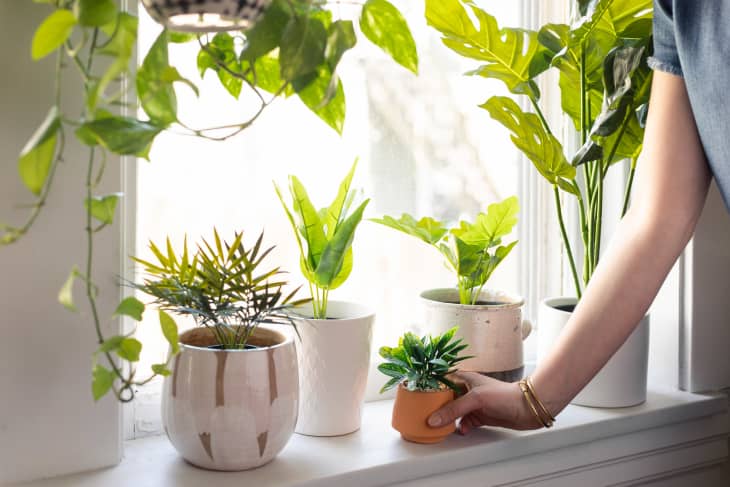The $1 Medicine Cabinet Staple That Can Help Cure Your Sick Houseplants

It happens to even the most experienced of plant lovers: One minute your favorite plant is perfect and thriving, and the next time you check on it, it’s a drooping, rotting mess. You pull the plant out of its pot to check the roots and discover that they are dark, mushy and smelly — another victim of overwatering about to bite the dust.
Typically, a plant with rotting roots means you’ll be going on a rescue mission to see what parts of the plant you can salvage and attempt to root from cuttings. Or you might think that plant is right on its way to the houseplant graveyard.
But if you’re about to toss that plant, stop! There might be one more thing you can do to try and save it. And the best part is, you probably have what you need in your medicine cabinet: hydrogen peroxide.
Yes, the cheap medicine cabinet staple can help give first aid to ailing plants as well as people. Here’s how: The chemical kills the bacteria that causes root rot in plants. It also breaks down into the soil and releases extra oxygen that helps the plant grow new, healthy roots.
Before you use hydrogen peroxide on your plants, you’ll need to dilute it. Mix one part of 3 percent hydrogen peroxide with two parts water in a watering can or spray bottle. From there, you have two options:
First option: Remove the plant from its pot.
Gently remove all the potting medium from around the roots of your plant. Once completely exposed, either spray or pour the hydrogen peroxide solution all over the root ball. Repot the plant in a new, damp potting mixture. Let the soil dry before watering the plant again.
Second option: Water in place.
Let the soil dry all the way through. Then, water the plant thoroughly with the hydrogen peroxide solution. Repeat the process until you see improvement in your plant’s health. If you’re unsure if your plant’s roots are healthy again, pull it out of the pot and check. If healthy, the roots will be firm and whitish in color.
If you’re a notorious overwaterer, this is a great trick to keep in your back pocket. There’s a good chance that with this treatment, your near-death plant will be pulling back from the brink with new growth and healthy baby roots.